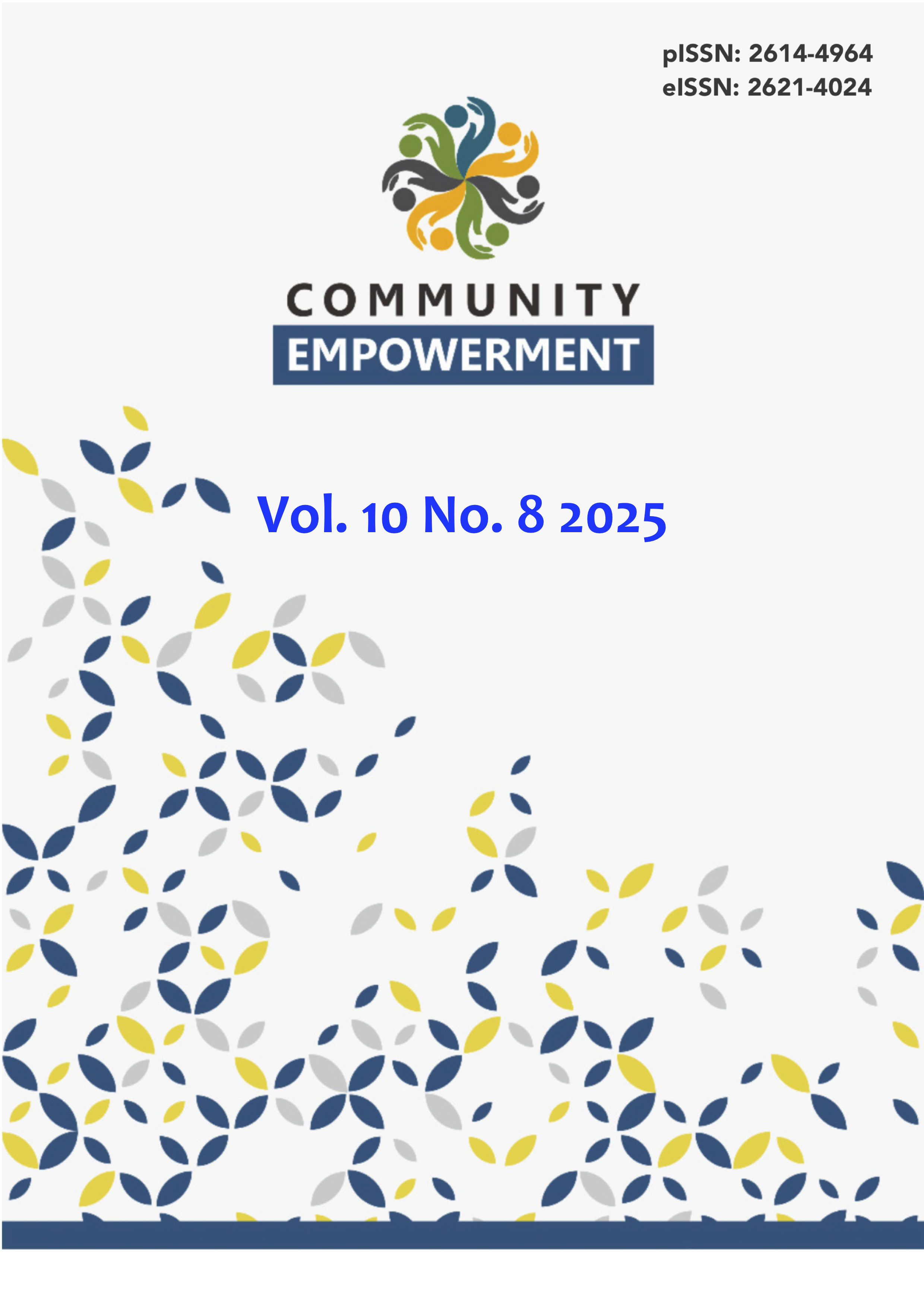Main Article Content
Abstract
The decline in sales of Bawor durian seedlings, caused by the widespread proliferation of similar cultivars across Indonesia, has become a significant challenge for the Ngudi Makmur and Gangga Mulya Farmer Groups. This training program was designed as an innovative solution to provide farmers with an alternative income source through intercropping with bush pepper (Piper nigrum) cultivation. The main challenge identified was the farmers' lack of technical knowledge and skills in propagating this type of pepper. Therefore, this program aimed to enhance their capacity in bush pepper propagation techniques using stem cuttings. The capacity-building was conducted through various methods, including continuous mentoring, lectures, focused group discussions, and hands-on training. The lecture and discussion sessions covered the basic theory of propagation, such as identifying ideal cutting materials, growth media, and environmental factors influencing success. The practical sessions focused on the techniques of cutting stems and transplanting seedlings into the growth media. The results of this program showed a significant increase in the participants' knowledge and skills. A propagation demoplot was also successfully established. This initiative not only aims to boost farmers' income but also supports more sustainable agricultural practices.
Keywords
Article Details

This work is licensed under a Creative Commons Attribution-NonCommercial 4.0 International License.
References
- Amanah, S., Budiastuti, M. S., & Sulistyo, A. (2022). Effect of the media type and auxin concentration on the growth of cuttings seedlings of pepper (Piper nigrum). Cell Biology and Development, 6(1), 32–40. https://doi.org/10.13057/cellbioldev/v060105
- Handayani, E., Palupi, T., & Rianto, F. (2020). Keberhasilan pertumbuhan stek lada dengan aplikasi naungan dan berbagai hormon tumbuh auksin. Agrovigor: Jurnal Agroekoteknologi, 13(2), 106–111. https://doi.org/10.21107/agrovigor.v13i2.6709
- Harinurdin, E., Laksmono, B. S., Kusumastuti, R., & Safitri, K. A. (2025). Community empowerment utilizing open innovation as a sustainable village-owned enterprise strategy in Indonesia: A systematic literature review. Sustainability, 17(8), 3394. https://doi.org/10.3390/su17083394
- Khair, N. K. M., Lee, K. E., & Mokhtar, M. (2020). Sustainable city and community empowerment through community-based monitoring. Sustainability, 12(22), 9583. https://doi.org/10.3390/su12229583
- Lestari, D., Edhi, T., & Dotti, S. (2019). Efisiensi pemanfaatan lahan pada sistem tumpangsari. Jurnal Ilmu Pertanian Indonesia, 21(2), 78–86.
- Mustakim, M. T., Talucder, M. S. A., Ruba, U. B., Islam, F., Rahman, A., Uddin, M. S., & Khan, A. U. (2022). Growth performance of black pepper (Piper nigrum) cuttings in different rooting media and growth regulators. Journal of Agroforestry and Environment, 15(2), 63–68. https://doi.org/10.55706/jae1518
- Pemerintah Desa Karangsalam. (2016). Monografi Desa Karangsalam: Desa Karangsalam, Kecamatan Kemranjen, Kabupaten Banyumas.
- Prasetyo, Sukardjo, E. I., & Pujiwati, H. (2009). Produktivitas lahan dan NKL pada tumpangsari jarak pagar. Jurnal Akta Agrosia, 12(1), 51–55.
- Pretty, J. N. (1995). Participatory learning for sustainable agriculture. World Development, 23(8), 1247–1263. https://doi.org/10.1016/0305-750X(95)00046-F
- Sharath, H. R., & Bhoomika, H. R. (2018). Influence of root trainer and media on root and shoot growth of black pepper. Journal of Pharmacognosy and Phytochemistry, 7(3), 400–403.
- Waman, A. A., Bohra, P., & Chakraborty, G. (2019). Vegetative propagation of Piper sarmentosum Roxb. Current Agriculture Research Journal, 7(1), 45–52. https://doi.org/10.12944/CARJ.7.1.06
- Warman, G. R., & Riajeng, K. (2018). Mengkaji sistem tanam tumpangsari tanaman semusim. Proceeding Biology Education Conference, 15(1), 123–127.
- Wijayanti, I., Astuti, A. W., & Sulistyorini, E. (2024). Strengthening the management of waste bank through organic waste processing. Community Empowerment, 9(11), 1416–1423. https://doi.org/10.18196/ce.91114246
- Wilson, P. J., & Struve, D. K. (2003). Rooting variables for stem cuttings. The Journal of Horticultural Science and Biotechnology, 78(1), 29–31. https://doi.org/10.1080/14620316.2003.11511581

